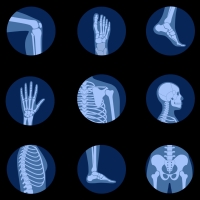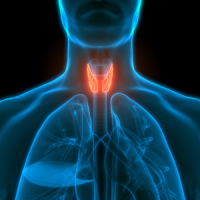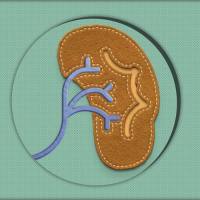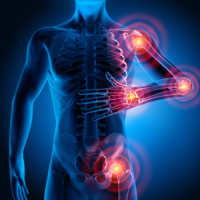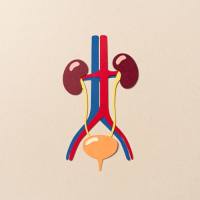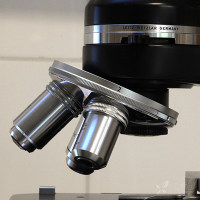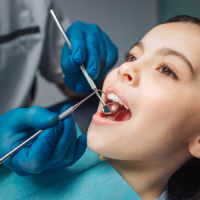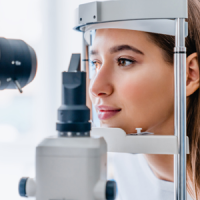【分享】Summary Basis for Regulatory Action-2014-10-24
Summary Basis for Regulatory Action
Summary Basis forRegulatory Action
1. Introduction
Baxter Healthcare Corporation (Baxter)submitted an original Biologics License Application (BLA) to seek U.S.licensure for Antihemophilic Factor (Recombinant), Porcine Sequence. Thecommercial product is a sterile lyophilized powder in single-use glass vialscontaining nominally 500 units per vial.The product is reconstitutedwith Sterile Water for Injection (SWFI) provided in a pre-filled syringe. Theproprietary name of the U.S. marketed product is OBIZUR.
OBIZUR is indicated forthe treatmentof bleeding episodes in adults with acquired hemophilia A (AHA).OBIZURis not indicated for the treatment of congenital hemophilia A (CHA) or vonWillebrand disease.
The active component in OBIZUR is arecombinant (r) analogue of porcine (p) Coagulation Factor VIII (FVIII) inwhich the B-domain of the molecule was replaced with a twenty-four amino acidlinker.
The safety and efficacy of OBIZUR wasevaluated in a prospective, open-label, multicenter clinical trial of 29subjects with AHA who received OBIZUR to treat a serious bleeding episode. Allsubjects evaluated for efficacy (n = 28) had a positive response to treatmentat 24 hours after dosing for the initial bleeding episode. No safety concernswere identified in the trial.
2. Background
AHA is a rare bleeding disorder caused by thedevelopment of autoantibodies to FVIII, thus creating FVIII deficiency andpreventing normal hemostasis. The bleeding episodes in patients with AHA may bespontaneous and severe at presentation, and they may be life-threatening. The clinical manifestations of AHA includehemorrhages into the skin, muscles, soft tissues, or mucous membranes. AHAaffects both males and females and is associated with significant morbidity andmortality.
The principle of using pFVIII is based on itslow cross-reactivity with anti-human FVIII antibodies due to sequencevariations between human and pFVIII in the A2 and C2 domains, the main targetsof FVIII inhibitors. The cross-reactivity of inhibitory antibodies to humanFVIII with pFVIII is estimated at 15% in patients with CHA, and is even lowerin patients with AHA. Therefore, when administered to patients with AHA, pFVIIIis less likely to be bound by inhibitory antibodies and can function in thecoagulation cascade to promote hemostasis.
Plasma-derived pFVIII (marketed as Hyate:Cunder U.S. License 1609) has beenlicensed in the U.S. since 1980 to achieve hemostasis in patients withanti-human FVIII inhibitors. The commercial production of Hyate:C wasdiscontinued in 2005 due to problems with sourcing suitable porcine plasma.Therefore, OBIZUR may address the clinical need for a FVIII-based product foruse in patients with AHA.
OBIZUR was developed under InvestigationalNew Drug (IND) application, IND 10695, originally submitted by Ipsen (France).The ownership of the program was transferred from Ipsen to InspirationBiopharmaceuticals, Inc. in 2010, and from Inspiration to Baxter in 2013. Theproduct was granted Orphan Drug designation on 18 March 2004 for “the treatmentand prevention of episodic bleeding in patients with inhibitor antibodies tohuman coagulation factor VIII”, and the Orphan Drug designation status wasre-confirmed on 24 April 2013. IND 10695was granted Fast Track designation on 24 October 2012 on the basis that thedrug is intended to treat a serious disease and has the potential to address anunmet medical need.
RegulatoryHistory
The application was submitted as a rollingBLA beginning with the Non-Clinical modules on 10 October 2013; followed by theCMC Quality and Facility modules on 8 November 2013; and finally the Clinicalmodules on 25 November 2013. The BLA was reviewed under the Priority Reviewschedule of the PDUFA V program.
During the review, FDA requested Baxter totighten the in-process control limits of the manufacturing process, re-validatethe lyophilization process, perform shipping validation, re-validate a numberof analytical procedures, revise the Drug Product Specification, and performadditional stability studies. In response, Baxter submitted Amendment 17 inApril 2014, which contained a substantial amount of new information. Thissubmission was classified as a Major Amendment, and the action due datewas extended to 25 October 2014.
The data contained in the BLA and itsamendments support the consistency and robustness of the manufacturing processfor OBIZUR. In addition, all the issues identified during the inspections ofthe facilities in ------------------(b)(4)---------------------------------------------satisfactorily addressed.
The clinical data demonstrate the safety andefficacy of OBIZUR for the proposed indication. Bioresearch Monitoringinspections support the validity of the clinical data. Potency of OBIZUR willbe assigned using the one-stage clotting assay based on the analytical andclinical data that demonstrate the assay’s suitability, and the generalavailability of this assay in clinical laboratories. OBIZUR will be the firstrecombinant FVIII product of porcine origin developed for the treatment of AHA.OBIZUR is not currently approved or marketed in any country.
Table 1: Review Milestones
3. Chemistry,Manufacturing and Controls (CMC)
a) ProductQuality
Manufacturing Process
The Drug Substance (DS) for OBIZUR ismanufactured at Baxter’s facility in---------(b)(4)---------------------------------. The DS manufacturing processis comprised of---------------------------------------------(b)(4)---------------------------------------.
Recombinant pFVIII is expressed in agenetically engineered baby hamster kidney (BHK) cell line which secretesrpFVIII into the cell culture medium.--------------------------------------------------------------------------------------------------------------------------------------------------------------------------------------------------------------(b)(4)-----------------------------------------------------------------------------------------------------------------------.
The purification process for DSincludes:
?----------------------------------------------------------------------------------------------------------------------------------(b)(4)----------------------------------------------------------------------------------------------------;
?Solvent/Detergent (S/D) treatment-------------------------------(b)(4)--------------------------------------------------------------------------;
?---------------------------------(b)(4)---------------------------------------------------------------------------------------------------------------------------------------;
?--------------------------------(b)(4)-----------------------------------------------------;
?------------------------------(b)(4)--------------------------------------------------------------------------------------------------------------------------------------------------;
?Nanofiltration through a series of two 15N filters to removenon-enveloped and enveloped viruses;
?-----------------------------------------------------------------------------------------------------------------------------------------(b)(4)--------------------------------------------------------------------------------------------------.
A batch of rpFVIII FBDS is defined as thematerial manufactured using-----------------------------------------------------(b)(4)-------------------------------------------------------------------------.
OBIZUR Drug Product (DP) is manufactured atthe --------------(b)(4)----------------------------------------------------------------------------.The DP manufacturing process consists of the -----(b)(4)------------------,sterile filtration ---(b)(4)---, filling, lyophilization, and over-sealing.Labeling and secondary packaging is performed at Baxter’s facility in-------(b)(4)------------------------------.
Source MaterialQuality and Control
Cell Bank System
---------------------------------------------------------------------------------------------------------------------------------------------------------------------------------------------------------------------------------------------------------------------------------------------------------------------------------------------------------------------------------------------------------------------------------------------------------------------------------------------------------------------------------(b)(4)--------------------------------------------------------------------------------------------------------------------------------------------------------------------------------------------------------------------------------------------------------------------------------------------------------------------------------------------------------------------------------------------------------------------------------------------------------------------------------------------------------------------------------------------------------------------------------------------------------------------------------------------------------------------------------------------------------------------------------------------------------------------------------------------------------------------------------------------------------------------------
Characterization of the master cell bank(MCB), WCB and End-of-Production (EOP) cells was performed in accordance withICH Guideline Q5D: Derivation and Characterisation of Cell Substrates Usedfor Production of Biotechnological / Biological Product, and includedspecification analyses for Sterility, Mycoplasma, Product Identity, and CellViability. Evaluation of the cell banksystem for safety with regard to adventitious viruses was performed inaccordance with ICH Guideline Q5A(R1): Viral Safety Evaluation ofBiotechnology Products Derived from Cell Lines of Human or Animal Origin(detailed under Viral Safety).
Genetic characterization was performed inaccordance with ICH Guideline Q5B:Qualityof Biotechnological Products: Analysis of the Expression Construct in CellsUsed for Production of r-DNA Derived Protein Products.------------------------------------------------------------------------------------------------------------------------------------------------------------------------------------------------------------------------------------------(b)(4)------------------------------------------------------------------------------------------------------------------------------------------------------------------------------------------------------------------------------------------------------------------------------------------------------------------------------------------.The stability program for MCB and WCB is in place, and lifetime projectionsprovide evidence of sufficient reserves of these source materials to maintainlong-term manufacture of OBIZUR.
Other RawMaterials
All raw materials used in the production ofOBIZUR are sourced from approved suppliers and released against approvedspecifications.---------------(b)(4)-------------------------------------------------------------used in the manufacturing process during cell culture expansion.------------------------------------------------------------------------------------------------------------------------------------------------------------------------------------------------------------------------------------------------------------------------------------------------------------------(b)(4)--------------------------------------------------------------------------------------------------------------------------------------------------------------------------------------------------------------------------------------------------------------------------------------------------------------------------------------------------------.Polysorbate 80 and sucrose used in the manufacture of OBIZUR are derived fromplant sources.
In-ProcessControls and Hold Times
Critical process parameters (CPPs) for the DSmanufacturing process and their acceptable ranges were initially determinedduring process development and are based on the results of multivariate studiesthat explored the influence of the variations in process parameters of eachmanufacturing step on the performance of the step and product quality. Theacceptance ranges were further verified and adjusted during the optimization ofthe process steps (process change evaluation studies) and production offull-scale GMP batches-------------------------------------------------------(b)(4)--------------------------------------------------------,and based on results of in-process control (IPC) and release testing. Theacceptance criteria for quality controls (IPC tests) were determined based onthe evaluation of historical manufacturing data.
As requested by the FDA during the review,the acceptance criteria for the following CPPs and IPC tests in the DSmanufacturing process were tightened or more clearly defined: -(b)(4)------------------------------------------------------------------------------------------------------------------------”---------------------------------------------------------------------------------------------------------------------------------------------------------------------(b)(4)--------------------------------------------------------------------------------------------------------------------------------------------------------------------------------------------------------------------------------------------------------------------------------------------------.
All in-process hold times-----------(b)(4)------------------------------------------------------ werevalidated in prospective stability studies that demonstrated unchangedquality-defining characteristics of the intermediate materials within theestablished times.
The CPPs, IPCs and process time limits forthe DP manufacturing process were determined based on the results of processdevelopment multivariate studies, release and stability testing of Phase IIIClinical and Process Validation DP batches, and time limitations formaintaining sterility assurance established in process simulation studies.
The selected CPPs and IPC tests assureadequate control over of the manufacturing process and its robustness indelivering product batches of consistent yield, purity and potency.
ProcessValidation
Baxter’s validation strategy for the DS andDP manufacturing processes is consistent with the recommendations in ICHGuidelines Q7, Q8 and Q11. The validation studies for the DS manufacturingprocess were performed at Baxter’s --(b)(4)-- facility, the intended commercialsite, under a prospective process validation protocol, which encompasses allstages of the DS manufacturing process,----------------(b)(4)---------------------------------------------------. Theprocess was validated by production, at commercial scale and nominal operatingconditions, of three consecutive DS Process Validation (PV) batches. Allpre-defined acceptance criteria stated in the Protocol (for CPPs, hold times,IPC and release testing) were met, thus fulfilling the requirements for processvalidation.
The validation studies for the DPmanufacturing process were performed at ----(b)(4)------------ facility, theintended commercial contract facility, under a prospective process validationprotocol. The original validation studies were designed for commercial scale,nominal operating conditions, and extended process times to confirm processconsistency and robustness and were completed in 2012 with the manufacture of(b)(4) consecutive DP PV batches. An additional confirmatory DP PV batch was manufacturedin 2013 to qualify the maximum lyophilizer load of filled vials. Process (CPPs)and quality (IPC tests) controls for DP PV lots complied with the prospectivelydefined acceptance criteria and the results of release testing were withinspecifications thus fulfilling the requirements for a successful processvalidation.
Based on the evaluation of the manufacturingand testing data for the Phase III clinical, process validation andpost-validation batches of DS and DP, the manufacturing process for OBIZUR isfound to be well controlled, adequately validated and consistent as evidencedby:
?Identification of CPPs and validation of their operatingranges;
?Identification of IPC and release tests and validation of theiracceptance criteria;
?Robustness of the manufacturing process steps within the provenacceptable ranges;
?Extensive characterization of DS and DP batches, representative ofdifferent stages of process development, and their comparability;
?Satisfactory release data for over (b)(4) DS and over 25 DP batches(commercial scale), including IPC and release test results of all PV batches,that meet the pre-determined criteria for quality characteristics;
?Availability and adherence to SOPs as verified during the twopre-license inspections.
Final DrugProduct: Composition and Presentation
OBIZUR is supplied as a white lyophilizedpowder in single-use vials that nominally contain 500 units per vial in 1-vial,5-vial, and 10-vial package sizes. Each package contains an appropriate numberof each of the following components correlating to the vial package size:single-use vial of OBIZUR, pre-filled syringe with 1 mL SWFI, and vial adapterwith filter.
Each vial of OBIZUR is labeled with theactual rpFVIII activity expressed in units determined by a one-stage clottingassay, using an rpFVIII reference material calibrated against the World HealthOrganization (WHO) 8th International Standard for FVIII concentrate, which is of humanorigin.
OBIZUR is formulated as a sterile,non-pyrogenic, lyophilized powder for intravenous injection afterreconstitution with SWFI. The reconstituted product contains rpFVIII and thefollowing components per mL: 8.8 mg sodium chloride, 0.04 mg Tris-base, 0.73 mgTris-HCl, 1.47 mg tri-sodium citrate dehydrate, 0.15 mg calcium chloridedehydrate, 1.9 mg sucrose, and 0.05 mg polysorbate 80.
Container ClosureSystem
The container closure system for OBIZURconsists of the following components:
?3 mL clear --------(b)(4)-------- glass vial conforming to------------(b)(4)------------------------------- glass specification
?13 mm butyl rubber stopper---------------------------(b)(4)---------------------------------------------------------------------------------------------------------------rubber closures
?Sterile 13 mm aluminum over-seal with polypropylene flip top
Characterizationof rpFVIII Structure and Function
The active ingredient in OBIZUR is arecombinant analogue of pFVIII, ----(b)(4)-----------------, with an approximatemolecular weight of 170 kDa. In rpFVIII, the B-domain was replaced with atwenty-four amino acid linker-------------------------------------------------------------------------------------------------------------------(b)(4)--------------------------------------------------------------------------------------------------------------------------------------------------------------------------------------------with a 90-kDa heavy chain and an 80-kDa light chain.
Figure 1. Structure of Recombinant PorcineFactor VIII (B Domain Deleted)
[(b)(4)]
The OBIZUR characterization program utilizedan extensive panel of analytical methods to evaluate the structure and functionof the rpFVIII product. The characterization studies were performed on selectedclinical batches of DS and DP representing different stages of processdevelopment, and rpFVIII reference material.
StructuralCharacterization
---------------------------------------------------------------------------------------------------------------------------------------------------------------------(b)(4)---------------------------------------------------------------------------------------------------------------------------------------------------------------------------------------------------------------------------------------------------------
---------------------------------------------------------------------------------------------------------------------------------------------------------------------(b)(4)-------------------------------------------------------------------------------------------------------------------------------------------------------------------------------------------------------------------------------------------------------------------------------------------------------------------------------------------------------------------------------------------------------------------------------------------------------------------------------------------------------------------------------------
The identity and purity of rpFVIII wereinvestigated using------------------------------------------------------------------------------------------------(b)(4)----------------------------------------------------------------------.These studies confirmed the --------(b)(4)------- of rpFVIII and its-------------------------------------------------------------------------------------------------------------------------------------------------------------------------------------------------------(b)(4)---------------------------------------------------------------------.
FunctionalCharacterization
The biological function of rpFVIII is toenable the production of a fibrin clot via the intrinsic coagulation pathwaywhere activated FVIII serves as a cofactor for activated Factor IX (FIXa) toactivate Factor X (FX). The functional studies for rpFVIII included theassessment of the kinetics of its activation by thrombin, and binding to vonWillebrand Factor (vWF). These studies demonstrated the thrombin cleavagepattern of rpFVIII to be consistent with the expected cleavage sites, and highaffinity of rpFVIII for vWF at a-------------(b)(4)---------------------------------------------------------------------------------------.
The biological activity of rpFVIII wasdemonstrated by its ability to support FX activation in the chromogenicsubstrate (CS) assay and to promote blood clotting in FVIII-deficient plasma inthe one-stage clotting (OC) assay.----------------------------(b)(4)-----------------------------------------------------------------------------------------------------------------------------.Based on the data from (b)(4) DP batches, the Applicant showed that the potency values of OBIZURdetermined bythe CS assay aregenerally lower than those by the OC assay, with an established OC/CS ratio of–(b)(4)- (further discussed under DP Specification).
Impurities
Product- and process-related impurities wereidentified and characterized in selected batches of ---(b)(4)--- DP that werestudied in clinical trials. Removal of product- and process-related impuritiesby the manufacturing process was demonstrated during process developmentin -(b)(4)-- studies, andwas confirmed during the validation of the commercial process.For each impurity, a risk assessment was performedin accordance with ICH Guideline Q9, and for all impurities, thefinal levels in --(b)(4)-- were confirmed to be safe in clinical studies.
AsrpFVIII is produced from a BHK cell line, --------------------------------------------------------------------------------------------------------------(b)(4)----------------------------------------------------------------------------------------------------------------------------------------------------------------------------------------------------------------------------.The risk of immune response and hypersensitivity reactions to HCP is consideredlow because exposure to OBIZUR is expected to be short-term: OBIZUR will beused to treat immediate bleeding episodes with a typical two-week treatmentperiod. Treatment-related antibodies against HCP were not detected in patientsin the pivotal clinical trial.
-------------------------------------------------------------------------------------------------------------------------------------------------------------(b)(4)----------------------------------------------------------------------------------------------------------------.
Analytical Methods
Suitableanalytical methods have been validated to support quality control testingthroughout manufacture, final product release and stability monitoring.Clarifications were obtained through requests of additional documentation andduring the pre-license inspections of Baxter’s---------------(b)(4)--------------- facilities. The following issues wereresolved in the course of the review.
Inthe validation of the ------(b)(4)----------------, reproducibility was notadequately established due to the use of inappropriate acceptance criteria. TheApplicant re-analyzed the data to calculate the relative standard deviation andconfidence interval values, as recommended in ICH Guideline Q2R1 fordetermining reproducibility.
Inthe validation of the OC assay for FVIII potency, the assessment of accuracy,range and repeatability did not meet the requirements of ICH Guideline Q2R1 inthat an insufficient number of concentrations and samples were used to coverthe established range. In addition, the FDA was concerned about the use of thesame material as standard and sample, and the qualification of the positivecontrol. These concerns were satisfactorily addressed with a re-validation ofthe assay and the submission of comprehensive data demonstrating parallelismbetween dilution curves for references and samples.
Theapproach used in the validation of the OC assay also did not allow theassessment of intermediate precision in a statistically valid manner. TheApplicant performed a re-validation of this parameter as recommended by FDA.The OC assay is now considered to be adequately validated and suitable for itsintended use as a DP lot release test and as the DP potency assignmentassay.
Anumber of deficiencies were identified in the validation of the CS assay forFVIII potency. Per FDA request, the method was re-validated,--------------------(b)(4)-----------------------------------------------------------------------.However, the specification of the CS assay for DP release will be changed to“For Information Only” as discussed in the next section.
Thedeficiencies identified in the validation of assays for excipients wereadequately resolved by providing supplemental validation reports, revised SOPsor re-evaluation of the data.
Anacceptable reference standard qualification and maintenance program has been established.
Two(b)(4) in-house product-specific primary reference standards have beenqualified for routine analytical testing of commercial (b)(4)-- DP. Thesuitability of the primary potency reference standard was established in acollaborative study conducted in five laboratories, and its potency value wasassigned against the WHO 8th International Standard for FVIIIconcentrate. This reference standard is used for the determination of (b)(4)--DP potency by the OC and CS assays. The primary quantitative reference standardwas qualified by meeting the acceptance criteria of the release specificationand additional characterization, and is used for those parameters that aremeasured by---------------(b)(4)------------------------------------------------ analyses.A stability program for the standards is also in place.
Drug Product Release Specification
Thespecifications for DS and DP are established in accordance with ICH GuidelinesQ6A and Q6B. The parameters are selectedfrom critical quality attributes determined in the process development studiesand risk assessments. Acceptance ranges/limits are established based onmanufacturing capability, clinical outcome, analytical variability, andstability data. The manufacturing capability was assessed through analysis ofrelease data for the Phase III clinical and process validation batches. Thefollowing substantive issues were resolved in the course of the review:
Potencyby the CS assay: Although the CS method was re-validated, both the Applicant andthe Agency identified issues related to the assay variability that appeared tobe dependent on the chromogenic reagent kits and reference standards used. Thisvariability requires further investigation. Since DP potency is assigned by theOC assay, the Applicant revised the DP Release Specification for FVIII Activityby the CS assay to “For Information Only”. Similarly, the OC/CS ratio will alsobe reported as “For Information Only”. The actual values of these two parameters will be reported in the Certificateof Analysis.
-------------------------------------------------------------------------------------------------------------------------------------------------------------------------------------------------------------------------------------------------------------------------------------------------------------------------------------------------------------------------------------------------------------------------------------------------------------------------------------------------------------------------------------------------------------------------------------------------------------------------------------------------------
Thefinal DP Release Specification in Table 2 is considered adequate to control theidentity, purity, biological activity, and safety of OBIZUR.
TABLE2: SPECIFICATION FOR DRUG PRODUCT
| |
| |
| |
| |
| |
| |
| |
| |
| |
| |
| |
| |
| |
| |
| |
| |
| |
| |
| |
| |
| |
BatchAnalyses and In-Support Testing
The BLA containsresults of release analyses of (b)(4)commercial-scale DS batches and 25 DP lots which include Phase III clinical,process validation and post-validation material. The results for all batchesare within DS and DP release specifications.
The Laboratories ofthe Division of Biological Standards and Quality Control (DBSQC) in the Officeof Compliance and Biologics Quality (OCBQ), CBER, FDA, performed in-supporttesting of the three PV batches of OBIZUR.
With the exceptionof the CS assay, all methods performed adequately, with all system suitabilityand assay validity criteria satisfied. The DBSQC results for the three DP lotstested were within the proposed specifications and comparable to the resultsreported by Baxter. The potency values measured by the CS assay were variabledepending on the kit used for measurement, and did not meet the acceptancecriteria on some occasions.
The in-supporttesting confirmed the suitability of critical test methods for their intendeduse as release specification tests. Following the 22 August 2014teleconference, Baxter changed the specification of the CS assay to “ForInformation Only”.---------------(b)(4)---------------------------------------------------------------------------------------------------------------------
StabilityStudies
The stabilityprogram for OBIZUR included studies under long-term storage (2 – 8oC) and accelerated ----(b)(4)------- conditions thatwere performed on DP lots representative of the intended commercialmanufacturing process – (b)(4) primary stability lots, (b)(4) PV lots, (b)(4)supporting stability lots, and (b)(4) additional lots.
The stability datafor DP PV lots in the original submission required re-evaluation to conform tothe changes------------------------------------(b)(4)--------------------------------------------------------------------------------------------------------------------------------------.The stability data for the reconstituted product were not provided for the PVlots, and the Stability Protocol was found incomplete. Per FDA request, theApplicant provided up-to-date stability data, and revised the StabilityProtocol.
The availablestability data revealed no negative trends during the observed long-termstorage period. The data support the proposed shelf-life of 24 months forOBIZUR final container when stored at 2 – 8oC (36 – 48?F). The photo-stability data indicate thatOBIZUR is sensitive to extreme light, and that the package is able to protectthe product from photo-degradation. Therefore, the product should be stored inthe original carton to protect it from light.
Per FDA request, thedata to demonstrate in-use stability of DP at release and after storage weresubmitted for the PV and primary stability lots. The data support the stabilityof the reconstituted product for up to three hours at ambient temperature. Thestorage conditions and handling of reconstituted OBIZUR are accuratelydescribed in the labeling.
Per FDA request, theStability Protocol for DP was modified to add more frequent endotoxin andsterility testing, and container closure integrity testing. The final StabilityProtocol has sufficient control of DP stability post-approval.
The stability datafor DS are sufficient to support its shelf-life of ----(b)(4)-----------. Theestablished Stability Protocol is adequate to control DS stabilitypost-approval.
Evaluationof Safety Regarding Adventitious Agents
Non-ViralPathogen Safety
The safety withregard to non-viral adventitious agents such as bacteria, fungi, and mycoplasmais ensured through the control of bioburden in source materials, adherence tocurrent good manufacturing practice, in-process control monitoring, validatedsterile filtration and aseptic filling processes, and release and stabilitytesting for sterility and endotoxin.
ViralSafety
Recombinant pFVIIIis produced in a transfected BHK cell line. All cell banks (MCB and WCB) andEOP cells have been tested in accordance with ICH Guidelines Q5A(R1) and Q5Dand demonstrated to be free of infectious viruses, mycoplasma, bacteria andfungi in both in vitro and in vivotests---------------------------------------------------------------------------------------------------------------------------------(b)(4)------------------------------------------------------------------------ ---------------------------------------------(b)(4)-------------------------------------------------------------------------------------------------------------------------------------------------------------------------.Thus, the cell bank system is adequately controlled, and the viral safety ofthe cell culture is ensured for up to (b)(4) harvests used in the commercialproduction.
The risk of viruscontamination is further mitigated by the inclusion of two dedicated viralclearance steps in the purification process: S/D treatment for virusinactivation and 15 nm nanofiltration for virus removal.-------------------------------------------------------------------------------------------------------------------------------------------------------------------------------------------------------------------------------------------------------------------------------------------------------------------------------------------------------------------------(b)(4)-------------------------------------------------------------------------------------------------------------------------------------------------------------------------------------------------------------------------------------------------------------------------------------------------------------------------------------------------------------------------------------------------------------------------------------------------------------------------------.These model viruses represent a wide range of size and physico-chemicalproperties and the results support the effectiveness of the manufacturingprocess to clear viruses from OBIZUR.
b)Exemption from CBER Lot Release
Under the provisiondescribed in Federal Register (FR) 58:38771-38773 and the 60 FR 63048-63049publication (8 December 1995), routine lot-by-lot release by CBER is notrequired for OBIZUR because it is a well-characterized recombinant product. Thein-support testing by CBER confirmed suitability of critical quality-definingmethods for their intended use as lot release specification tests. Exemption of OBIZUR from CBER Lot Release isjustified.
c)Review of Manufacturing Facilities
The manufacture of---------------(b)(4)----------------------- is performed at the Baxter (b)(4)facility located in ----(b)(4)------------. The manufacture of OBIZUR DP isperformed by a contract manufacturer,------------------------------------(b)(4)----------------------------.Packaging and labeling of DP is performed at the Baxter------(b)(4)------------ facility located in (b)(4), --------------- Thediluent is manufactured by--------------------------(b)(4)--------------------------------------------------------------------------------------------------------------.
Baxter-------(b)(4)-------------- Facility
Baxter--------(b)(4)---------------------------- is used to manufacture OBIZUR DS.---(b)(4)-------- consists of the GMP manufacturing area, QC laboratories,warehouse, and office space. OBIZUR is the only product made at the Baxter(b)(4) facility. The pre-license inspection (discussed below) associated withthis BLA was the first FDA inspection at the Baxter (b)(4) facility.
---------------(b)(4)------------------------------
---------------------------------------------------------------------------------------------------------------------------------------------------------------------------------------------------------------------------------------------------------------------------------------(b)(4)------------------------------------------------------------------------------------------------------------------------------------------------------------------------------------------------------------------------------------------------------------------------------------------------------------------
Baxter---------(b)(4)--------------------------- Facility
Packaging andlabeling of the OBIZUR DP is performed at Baxter -----(b)(4)---------- (part ofBaxter (b)(4) facility) located in ----------(b)(4)------------------------.This facility was last inspected by Team Biologics from ------(b)(4)-----------,and the inspection was classified as VAI. The pre-license inspection of Baxter’s ---(b)(4)-------- facility waswaived per SOPP 8410.
---------------------------------(b)(4)--------------------------------------------------
---------------------------------------------------------------------------------------------------------------------------------------------------------------------------------------------------------------------------------------------------------------------------------------------(b)(4)--------------------------------------------------------------------------------------------------------------------------------------------------------------------------------------------------------------------------------------------------------------------------------------------------------------------------------------------------------------------------------------------------------------------------
-------------------------------------(b)(4)------------------------------
--------------------------------------------------------------------------------------------------------------------------------------------------------------------------------------------------------------------------------------------------------------------------------------------------------------------------------------------------------------------------------------------------------------------------------------------------------------------------------------------------------------------------------------------------------------------------------------------------------------------------.
Inspectionof the Manufacturing Facilities
CBERPre-license Inspection of Bulk Drug Substance Manufacturing Facility
CBER conducted apre-license inspection (PLI) at Baxter Health Corporation’s----------------------------------(b)(4)----------------.
The PLI of theBaxter (b)(4) facility covered the manufacturing process for the DS, whichincludes -----------------------------------------------------------------------------------------------------------------------------------------------(b)(4)----------------------------------------------------------------------------------------------------------------------------------.The PLI covered Quality, Facility & Equipment, Materials Management,Production, Packaging & Labeling, and Laboratory Controls Systems withrespect to the manufacture of OBIZUR DS. At the conclusion of the inspection,CBER issued Form FDA 483 with nine observations. Deficiencies were notedincluded qualification of the bulk DScontainer closure system;; deviation management; ; review and assessingvalidation results for laboratory testing procedures; handling----(b)(4)--------------; record keeping for equipment use logs. In their 27June and 24 August 2014 responses (Amendments 24 and 29), Baxter (b)(4)provided corrective actions implemented to address the 483 items. Thecorrective actions were reviewed and found to be adequate. All inspectionalissues are considered to be satisfactorily resolved.
CBERPre-license Inspection of Drug Product Manufacturing facility
CBER conducted a PLIat Baxter’s contract manufacturer---------------(b)(4)----------------------------------------------------.
The PLI of the----(b)(4)-------- facility covered the manufacturing process for OBIZUR DP,which includes -----(b)(4)--------- sterile filtration of --(b)(4)--, asepticfilling, lyophilization, and over sealing of vials containing lyophilized DP.The PLI covered Quality, Facility & Equipment, Materials Management,Production, and Laboratory Controls Systems with respect to the manufacture ofOBIZUR DP. At the conclusion of the inspection, CBER issued Form FDA 483 withsix observations. Deficiencies were noted in the validation of the lyophilizationprocess, environmental monitoring program, shipping validation, and equipmentcalibration. The corrective actions werereceived on 16 May 2014, 12 August 2014, 25 August 2014, 8 September 2014 and19 September 2014 in Amendments: 20, 27, 29, 30 and 33 respectively, reviewed and found to beadequate. All inspectional issues areconsidered to be satisfactorily resolved.
d) EnvironmentalAssessment
The BLA included a request for a categoricalexclusion from an Environmental Assessment under 21 CFR § 25.31(c). The FDAconcluded that this request is justified as the manufacturing of this productwill not alter significantly the concentration and distribution of naturallyoccurring substances and no extraordinary circumstances exist that wouldrequire an environmental assessment.
e) Recommendation
The manufacturing process for OBIZUR,Antihemophilic Factor (Recombinant), Porcine Sequence, is considered to beadequately validated at the commercial scale and is sufficiently controlled toassure consistent manufacture of the commercial product that meets acceptablerelease specifications. Themanufacturing process provides acceptable safety margins regarding adventitiousagents. All inspectional issues wereadequately addressed. The reviewers fromthe Division of Hematology Research and Review, OBRR, the Division ofManufacturing and Product Quality and the Division of Biological Standards andQuality Control, OCBQ, conclude that Baxter Healthcare Corporation has providedsufficient data and information on chemistry, manufacturing and controls tosupport the licensure of OBIZUR.
4. Non-ClinicalPharmacology/Toxicology
a) GeneralConsiderations
The nonclinical program consisted of a seriesof studies to demonstrate the safety and effectiveness of rpFVIII in animalsincluding hemophilic mice and dogs, and wild-type FVIII expressing---(b)(4)----- monkeys. To support the proposed clinical indications, thecompleted nonclinical program consisted of the following:
(a) safety pharmacology in hemophilia A miceand hemophilia A dogs,
(b) proof of principle in hemophilia A miceand hemophilia A dogs,
(c) acute toxicity in hemophilia A dogs andin monkeys,
(d) pharmacokinetics in monkeys andhemophilia A dogs,
(e) repeat dose toxicity, withtoxicokinetics, in mice and monkeys,
(f) immunogenicity in hemophilia A mice andin monkeys and
(g) hemostatic activity of rpFVIII inhemophilia A mice and hemophilia A dogs.
b)Pharmacological/Toxicological Findings
The Applicant has completed a nonclinicalprogram including GLP-compliant and non-GLP nonclinical studies in relevantanimal models. Models included hemophilia A mice and hemophilia A dogs, andwild-type FVIII expressing mice and ---(b)(4)----- monkeys. An adequate safetyprofile for rpFVIII has been established to support its intended use in thetreatment of bleeding episodes in adult patients with AHA.
To support the proposed clinical indications,the completed nonclinical program consisted of a series of studies to demonstratethe safety and effectiveness of rpFVIII in animals including: (a) safetypharmacology in hemophilia A mice and hemophilia A dogs, (b) proof of principlein hemophilia A mice and hemophilia A dogs, (c) acute toxicity in hemophilia Adogs and in monkeys, (d) pharmacokinetics in monkeys and hemophilia A dogs, (e)repeat dose toxicity, with toxicokinetics, in mice and monkeys, (f)immunogenicity in hemophilia A mice and in monkeys and (g) hemostatic activityof rpFVIII in hemophilia A mice and hemophilia A dogs.
The proof-of-principle and pharmacologicactivity of rpFVIII were demonstrated using two animal models of hemophilia A.In hemophilia A dogs, cuticle bleeding time was shortened in a dose-relatedmanner following a single intravenous injection of 3, 25 or 100 U/kg rpFVIII.Similarly, dose-related improvements in survival were reported in hemophilia A(i.e., Factor VIII knock-out) mice following hemorrhagic insult (tailtransection). A single intravenous dose of 89 U rpFVIII/kg body weight resultedin a 50% survival rate following the tail injury, as compared to 0% survival inhemophilic mice injected with the vehicle control. The effective doses ofrpFVIII identified in the animal models were used to establish theproof-of-principle and dosing range for the initial clinical trial in AHApatients.
Overall, the nonclinical safety profile ofOBIZUR did not identify any unexpected findings or significant concerns;toxicities that were observed were due to exaggerated pharmacological effect ofexcess amounts of Coagulation Factor VIII, which are expected for products inthis class. Recombinant porcine FVIII was tested acutely in animals at doses upto 1000 U/kg, (i.e., 5 times the intended starting clinical dose of 200 U/kg),without unexpected adverse events (AEs). Repeat-dose toxicity studies werecompleted with daily dosing of up to 1000 U/kg for up to 12 weeks (i.e., 13.3times the intended, median prophylactic clinical dose of 75 U/kg) and theproduct was well-tolerated.
In animal studies, the exaggeratedpharmacological effects of rpFVIII that were considered adverse includedthrombogenic events and local reactions at the treatment site, and werereported after repeat dosing with rpFVIII doses 5-fold greater (i.e., 1000 U/kgrpFVIII) than the proposed clinical dose of 200 U/kg for use in the repeat dosesetting. An additional toxicity reported in the animal studies washypersensitivity at the injection sites, as evidenced by gross andhistopathologic findings of inflammation, cellular infiltrates, swelling andbruising. Together, the adverse findings in the animal studies were expectedbased on species differences between the test animals and the porcine FVIII,and predictive for human use of the product, as confirmed by the AEs reportedin the clinical trial. Toxicokinetic profiles demonstrated a lineardose-dependent increase in the levels of rpFVIII, followed by a time-dependentdecrease in product levels. This profile was maintained until anti-productantibody formation occurred, resulting in decreased rpFVIII activity. Althoughimmunologic responses may occur in patients following repeated productadministration and are a potential safety concern, the formation ofanti-product antibodies in animals is not unexpected and is not predictive ofan immunogenic response to rpFVIII in humans. There were no reports ofneutralizing anti-rpFVIII antibodies or anaphylaxis in clinical trials ofrpFVIII.
Based on the intended use of rpFVIII,nonclinical reproductive or developmental toxicity studies, long-term animalstudies to evaluate carcinogenic potential, and studies to determinegenotoxicity and effects of OBIZUR on fertility were not performed. Atoxicological risk assessment was completed on potential extractable andleachable impurities associated with the OBIZUR manufacturing process andcontainer closure system. There were no concerns identified regarding theseimpurities, nor unexpected toxic effects that would require additional safetystudies.
c) Recommendation
The safety profile and hemostatic activity ofrpFVIII determined for OBIZUR in the nonclinical program, and the toxicologicalrisk assessment are sufficient to support OBIZUR’s proposed use for thetreatment of bleeding episodes in patients with AHA.
5. ClinicalPharmacology
a)Mechanism of Action
When administered in patients with AHA,OBIZUR temporarily replaces the inhibited endogenous FVIII that is needed foreffective hemostasis. Upon activation by thrombin, rpFVIIIa acts as a cofactorfor activated FIX triggering a chain of biochemical reactions – activation ofFX, which converts prothrombin into thrombin, and subsequent interaction ofthrombin with fibrinogen results in the formation of the fibrin clot that stopsthe bleeding.
b)Pharmacodynamics
Patients with AHA have normal FVIII genes butdevelop autoantibodies against their own FVIII (i.e., inhibitors). Theseautoantibodies neutralize circulating human FVIII and create a functionaldeficiency of this procoagulant activity. AHA results in a prolonged clottingtime as measured by the --------------------(b)(4)----------------------------assay, a conventional in vitro test for biological activity of FVIII.rpFVIII replaces the neutralized endogenous FVIII and restores the ability toform a fibrin clot.
c)Pharmacokinetics
A formal pharmacokinetic (PK) study of OBIZURin patients diagnosed with AHA has not been conducted.
A PK analysis of OBIZUR was conducted underStudy OBI-1-101, a Phase I, parallel-group study comparing the safety and tolerabilityof OBIZUR versus HYATE:C when administered to CHA subjects (> 12 yr). Only 3patients receiving a single dose of OBIZUR (100 units/kg) as a shortintravenous infusion were included in data analysis (as the study wasterminated due to non-availability of HYATE:C). The patients in the OBIZURGroup were in a non-bleeding state, had no detectable inhibitors and had low orabsent anti–porcine FVIII antibody titers. Blood samples for PK analysis weretaken up to 48 h post-dose and rpFVIII activity was measured by the one-stageclotting assay. The estimated relevant mean PK parameters and respectivestandard deviations (SD) are: terminal half-life (T1/2) = 10.6 (0.8) hr, totalclearance CL = 546 (376) mL/h, Vd = 8.3 (5.6) L, IVR = 1.76 U/dL per U/kg.However, given the small number of patients (N=3) available for a full PKanalysis the results are not robust enough to allow for a general PKcharacterization of OBIZUR in patients diagnosed with CHA.
In the pivotal clinical study (OBI-1-301), aformal PK analysis of OBIZUR in patients with AHA (non-bleeding state) was notconducted as participation in PK was optional, and obtaining blood samples atadequate time-points was not feasible in the bleeding AHA patients.. Thesummary parameters from 3 patients indicate a maximal activity of OBIZURbetween 17 and 28 minutes following the final dose, with a calculated mean T1/2 between 3.6 and4.0 hours after dosing. The analysis and interpretation of the PK parameters isconfounded by inadequate blood sampling schedules (up to 24 h post-dose). As aresult, the terminal drug elimination phase has not been sufficiently capturedand a meaningful interpretation of the PK data is precluded. In addition, evenwith a correct sampling schedule and data analysis, the number of patients(N=3) available for the PK analysis would not be sufficient to allow a robustinterpretation of the PK parameters.
6.Clinical/Statistical
a) ClinicalProgram
Clinical safety and efficacy trials of OBIZURwere conducted under IND 10695. Tosupport licensure for the proposed indication, the clinical development programincluded: (1) an uncontrolled, international, multicenter, open-label,prospective trial (OBI-1-301), where subjects with AHA due to auto-immuneinhibitory antibodies to human FVIII received OBIZUR to treat a seriousbleeding event, (2) an expanded access protocol based on trial OBI-1-301(OBI-1-301a), (3) an open-label, non-randomized, prospective safety andefficacy trial in subjects with CHA with inhibitors and with a history ofinadequate response to bypassing agents, which was terminated by the applicantafter enrollment of one subject (OBI-1-302), (4) a completed open-label safetyand efficacy trial in non-life and non-limb threatening bleeding episodes insubjects with CHA with inhibitors (OBI-1-201), and (5) a pharmacokinetic studyof OBIZUR versus HYATE:C in adolescents and adults with CHA, with low or absentanti-porcine FVIII inhibitor antibody titers, in a non-bleeding state(OBI-1-101). This review focuses on thesafety and efficacy trials for the treatment of serious bleeding episodes inadults (≥18 years) with AHA due to autoantibodies to human FVIII (OBI-1-301 andOBI-1-301a). Data from the clinicaltrials conducted in subjects with CHA were reviewed for an integrated analysisof safety.
The primary efficacy outcome of the studyOBI-1-301 was the proportion of serious bleeding events responsive to OBIZURtherapy at 24 hours after the initiation of treatment. Hemostatic efficacy was evaluated using a pre-definedfour-point rating scale (see below)
A positive response was defined as aneffective or partially effective assessment. In the case of an inconsistency between the clinical assessment and theFVIII levels, the clinical assessment was used to determine the outcome. Based on the assumption of a responserate of 80% and 50% as a baseline response rate, using a two-sided alpha of0.05, a sample size of 28 bleeding events would have 90% power to test the nullhypothesis (H0) that the response rate = 50%, with the alternative hypothesis (H1) that the responserate >50% (based on the exact test of this null hypothesis). The small sample size is justified because ofthe rarity of the disorder of acquired hemophilia A. The treatmentwould be considered clinically beneficial if the lower bound of the two-sided95% CI for the positive response rate is greater than 50%.
A total of 29 adult subjects (≥18 years) withAHA were enrolled and received at least one dose of OBIZUR to treat a seriousbleeding episode that required hospitalization, including 25 subjects who wereenrolled in the pivotal trial OBI-1-301 and 4 subjects enrolled under theexpanded access protocol OBI-1-301a. These bleeding events included 19 intramuscular or joint, 4post-surgical, 2 intracranial, 2 surgical, 1 retroperitoneal, and 1 periorbitalbleeding events. All subjects received an initial dose of 200 units per kgOBIZUR; the dose and frequency of additional doses were based on clinicaljudgment and measurement of FVIII levels achieved. Subjects with a prior history of bleedingdisorders other than AHA, anti-porcine FVIII antibody titer > 20 BethesdaUnits (BU), or in whom the bleeding episode was judged likely to resolve on itsown were excluded. One subject was considered evaluable at study entry;however, it was later determined that this subject did not have AHA, leaving 28subjects evaluable for efficacy.
Of the 29 treated subjects, 19 (66%) weremale and 10 (34%) were female. The median age was 70 years (range 42-90 years),which reflects the broader population targeted by the proposed indication. Themajority of enrolled subjects had a significant medical history ofcardiovascular disorders (76%) and endocrine/metabolic disorders (69%). A totalof 14 subjects (48%) had a previous history of AHA, at which time 11 subjects(28%) received immunosuppressive therapy, 11 subjects (28%) receivedanti-hemorrhagic medications (e.g., rFVIIa, activated prothrombin-complexconcentrate, tranexamic acid) and 8 subjects (28%) were treated withunspecified therapy for a previous bleeding episode.. The majority of the subjects were White(62%); 6 (21%) were African-American, and 5 (17%) were Asian. Enrolled subjects were from the United States(16 subjects; 14 sites), Canada (5 subjects; 1 site), India (4 subjects; 1site) and the United Kingdom (4 subjects; 2 sites).
A total of 18 (62%) subjects completed thestudy. As expected, there was a largenumber of discontinuations due to the fact that the enrolled subjects werecritically ill and had significant co-morbidities,. Nine subjects were discontinued from thetrial for the following reasons:
?Fatal intracranial hemorrhage (ICH; two subjects)
?Development of anti-porcine FVIII inhibitor (two subjects)
?Sepsis resulting in death (two subjects)
?Renal failure resulting in death (one subject)
?Lack of efficacy (one subject)
?Non-compliance (one subject)
?One subject was lost to follow-up for safety assessment but hisinitial qualifying bleed was included in efficacy analysis.
The status of one subject was unknown at thetime of BLA submission.
Efficacy Analysis
The primary endpoint of hemostatic responseat 24hrs was assessed by the study site investigator using a pre-specifiedrating scale (Table 3) that was based on clinical assessments and factor VIIIactivity levels achieved. An assessment of effective or partially effective wasconsidered as a positive response.
Table3: Hemostatic Efficacy Rating Scale
All 28 subjects evaluable for efficacy had apositive response to treatment for the initial bleeding episodes at 24 hoursafter initiation of OBIZUR therapy. A positive response was observed in 19/20subjects (95%) evaluated at 8 hours and all 18 subjects that were evaluated at16 hours. The median dose per infusion to successfully treat the primary bleedwas 133 units per kg with a median total dose of 1523 units per kg. In the initial 24 hour period subjectsrequired a median of 3 infusions and a median dose of 200 U/kg. When treatmentwas required beyond 24 hours, a median of 10.5 infusions (median dose 100 U/kg)were given for a median of 6 days to control a bleeding episode. Of thosesubjects treated with OBIZUR as first-line therapy, defined as no immediateprevious use of anti-hemorrhagic agents prior to the first OBIZUR treatment,16/17 (94%) had treatment success reported. Of the 11 subjects who previously received anti-hemorrhagic therapies,eight had eventual successful treatment (73%).
In addition to response to treatment, theoverall treatment success was determined by the investigator based on his/herability to discontinue or reduce the dose and/or dosing frequency of OBIZUR(secondary endpoint). According to thismeasure of overall treatment success, a total of 24 of 28 (86%) subjects hadsuccessful treatment of the initial bleed (success criteria was notprespecified). Treatment success was notachieved in four subjects:
?Subject -(b)(6): This patient was a 74 year-old African Americanfemale who received OBIZUR to treat bleeding resulting from a fasciotomy of thethigh. Response to therapy at 24 hours was considered partially effective,bleeding was reduced, and Factor VIII levels were greater than 20% (range of 0to 240% during the first 24 hours). The subject was on study for 24 days andreceived 140 infusions of OBIZUR before being discontinued by theinvestigator. A review of the hemostaticresponses for this qualifying bleed revealed that the investigator’s assessmentof efficacy was positive. Only two doses at one and 11 days after the firstdose were considered not effective. Thesubject experienced an AE of device occlusion that was considered possiblyrelated to the study drug and an unrelated AE of urinary tract infection. She subsequently died from sepsis 31 days afterthe initial infusion of OBIZUR. The subject was negative for anti-porcinefactor VIII inhibitor at baseline.
?Subject -(b)(6): This patient was a 70 year-old African Americanfemale who received OBIZUR to treat bilateral subdural hematomas. The subjectreceived three doses over a two-day period. The 8- and 24-hour assessments were positive; however, the subject’smental status worsened and at 26 hours after the initial dose of OBIZUR thefamily decided to withdraw medical care. Two hours after withdrawal from thetrial, the subject died.
?Subject -(b)(6)-: This patient was an 87 year-old Asian female whoreceived OBIZUR to treat a gastrointestinal bleed that was consideredcontrolled at the time of discontinuation. The subject developed cholangitis and sepsis and medical care waswithdrawn at the family’s request.
?Subject -(b)(6)-: This patient was a 61 year-old White male whoreceived OBIZUR to treat bleeding related to a planned hemicolectomy. This subject received OBIZUR prior to thebleeding event, which was considered a protocol violation. At the 8- and24-hour assessments, bleeding was evaluated as effective. The subject was found to have a positiveanti–porcine inhibitor titer of 8 BU and was subsequently discontinued from thetrial before the assessment of successful control was completed. After discontinuation, he was placed on aFVIII bypassing agent. Within two weeksof the initial treatment, the subject suffered a serious bleeding event at theinitial qualifying site. As per protocol,because it was fewer than two weeks since the initial bleed, the bleeding eventwas considered not controlled. Thesubject expired as a result of the intestinal hemorrhage.
BioresearchMonitoring (BIMO) Inspections
BIMO inspections of three clinical studysites were performed in support of the BLA and we









